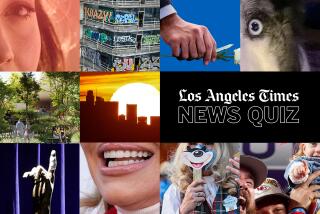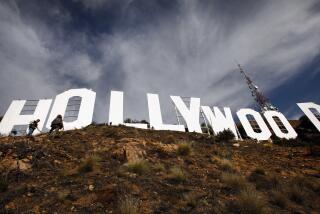Everybody out there reset your Rolex?The timekeeper...
Everybody out there reset your Rolex?
The timekeeper at Caltech’s desert facility is probably one of the few Southern Californians to notice that the New Year arrived a second late.
Sometime this coming week, Harry Hardebeck, a member of the Pasadena institute’s professional staff at its Owens Valley radiotelescope observatory, will have to reconfigure the observatory’s three main clocks, to set back 1988 by one second to reflect the “leap second” that scientists have added to 1987 to accommodate man’s tiny out-of-synch accounting of nature’s behavior.
“Nature itself doesn’t have that jump in it--it’s just our clocks,” says Hardebeck, noting man’s desire to try to maintain “an absolute standard” between astronomical time and Earth-rotation time.
It turns out that, thanks to leap seconds, we are all nearly a half-minute younger than we think. Since the mid-1970s, there have been 24 leap-second adjustments to the world’s clocks, the most recent in 1985.
The Caltech facility’s delicate radio-telescopes need accurate to-the-second clocking to remain in synch with one other and with international time standards.
While the timekeepers at the Bureau International l’Heure in Paris, at London’s Greenwich Observatory and at Big Ben had to stay up late to reset the second (“I’ll be doing it with an extra sip (of champagne),” said Big Ben clock keeper Bryan Sewell), Hardebeck says he will probably wait until Monday to perform the “small maneuver” that makes the adjustment.
As for his personal timepiece: “I’m afraid my watch is pretty old . . . a second more or less won’t matter much.”
And they sang “O Sole Mio.”
About 1,300 dateless singles, undaunted by holiday dating duos, went out on the town anyway for New Year’s Eve--collectively, at a Santa Monica watering hole.
It is the second year the Young Executive Singles group has sponsored the event, and it drew twice as many as its 600-person turnout at the end of 1986.
As its spokeswoman said, the gala hopes to shatter the New Year’s stigma of datelessness on the biggest couples night of the year--crying, not answering the phone, hiding in a dark closet (and that was just your mother’s reaction . . . ).
Never less than zero:
The death-clock electronic scoreboard above the YWCA in Westwood was clicked back to six zeroes just past midnight New Year’s Day.
By the end of 1987, the billboard had totted up more than 320,000 smoking-related deaths in the United States for the year. The new year’s relentless tally promises no fewer.
And William Bloomfield, 74, the reformed smoker who pays for the megawatt memento mori , wants people to get the message for 1988: Quit smoking, or at least consider it.
Bloomfield reportedly spent as much as $25,000 to get the word across on the sign, which bears the logos of the nation’s heart, lung and cancer groups.
The annual smoking death rate is the same toll as two 747s colliding daily--”two of those every day,” marvels Bloomfield. “That would really make headlines, wouldn’t it?”
Who could forget that Steinberg poster of North America--the one with Manhattan looming as large as the Great Wall of China and everything else about the size of lentils?
Obviously not New Yorkers.
A Los Angeles man had telephoned New York the other day to place a classified advertisement in the Village Voice, an alternative weekly published in New York and widely read in major cities.
As he was about to hang up, the woman taking the ad asked him: “Do they get the Voice in L.A.?”
“Yes,” he answered. “We have cars and everything.”







